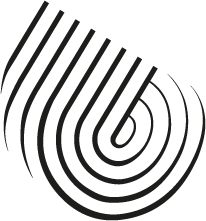Baltic Bothy Residency 2017 – Katie Cuddon
The sedge warbler had his laugh, waking me (a city girl) at dawn with the sounds of an electronic amusement arcade. The drilling, trilling, clicking of the vox apparatus. Flies approach the midge-screen; some retreat some rest. Even the bluebells, with the help of the wind, limber up for the day.
When I set out for Eigg I had intentions, as everyone who embarks on an artist residency is supposed to have. I imagine working in the bothy. I imagine working within this self-contained unit – with one wall of glass looking out over Cleadale and the sea to Rhum – must feel like sitting at the helm of a vehicle. The threshold between the defined space of the studio and the limitless expanse of the landscape it faces is extreme.
But so still in Sweeney’s Bothy. And with binoculars you can breathe it all into two small lenses: a whole landscape that feet might tread for days trying to assimilate.
 I think I’m interested in the tensions between these interior and exterior spaces and the dialogues involved in negotiating their thresholds. They propose complex conversations, both psychological and physical. I imagine occupying the studio and taking up a synergistic position within this relationship between interior and exterior.
I think I’m interested in the tensions between these interior and exterior spaces and the dialogues involved in negotiating their thresholds. They propose complex conversations, both psychological and physical. I imagine occupying the studio and taking up a synergistic position within this relationship between interior and exterior.

On one of those days, pacing the prehistoric coastline, a magisterial head in stone camouflage. Surrounding it, cipher scored and scratched. Not legible to me but alive with intent.



I imagine what I will do. Then I write what I will do. I write that I will make drawings, more specifically, rubbings ‘in order to mediate, explore, feel, this threshold’. I couch this within the recurring subjects and process that have and continue to run through my work. It sounds neat, I believe it myself.

Along the same coastline a horse’s rump and distended stomach sit fused together from thousands of years spent huddling up in Western Isle winters.
Shortly after my arrival my plans begin to be encroached upon by new images (real, not imagined). I go for long walks and see nothing but sculpture. I try to trace the processes by which these structures may have come about. I go back thousands of years. I plan new methods of making, props, tools, studio scenarios. Both logical and illogical. I am reminded of Willem De Kooning wearing multiple pairs of gloves to model his sculptures – Mickey Mouse hands – so that you, the audience, recognize them as being made by something quite other. I speculate as to how I can change my mark without the assistance of creatures, the weather or a billion laps of a wave.

A woman curled up asleep on the sands lap. What can I take from this?
Perhaps I could change the surface upon which I model my clay, creating something uneven with sand and rocks so the finished work doesn’t appear to have grown up out of the flat surface of a table top. Perhaps, like De Kooning, I disable my hands. Or perhaps I bring a bag of clay out here and make something within the cupped hands of a weather beaten rock.

Hidden behind a hillock on the North-West corner (the place I’ve come to think of as Eigg’s back alley), a whale skeleton. The skin is rotting and the stench sits heavily above it, despite the wind.

Armature starts to look more like armour and I’m wondering if two loose ribs might find an additional role within a sculpture someday.

With these new plans, waiting to hatch in the studio, two whale ribs travel with with me. I wrap them in cling film – an ineffective attempt to contain their stench.
They stretch and ark out from the overhead luggage rack, poised to pierce a bag of clay.
I’ve now a piece of Eigg in my studio. A talisman for future productivity. I speculate as to how I might use them. Ideas emerge, many rejected. Their best function may be, as their form suggests, a means to divine the many possibilities that came towards me whilst on Eigg.
They remain an antennae for all I felt, thought and learnt.
